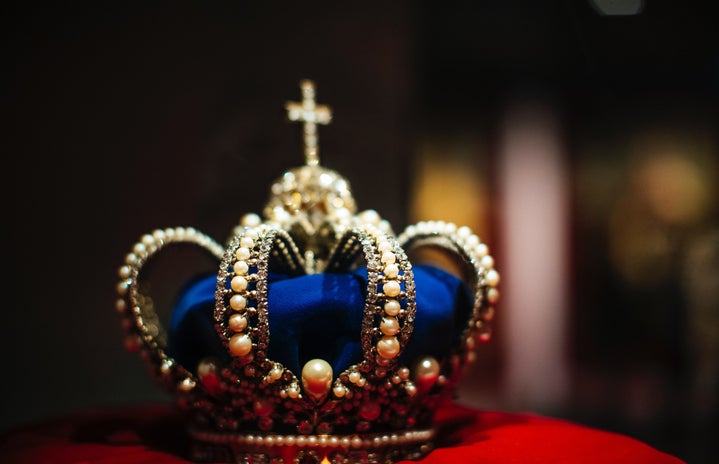In Nov. 2020, Netflix dropped the highly anticipated fourth season of its hit show The Crown. Following the life of the British royal family, Season Four broke streaming records, hitting 29 million views in the first week.
The Crown isn’t the first show about British aristocracy. CW’s Reign is about Mary Queen of Scots, and in film, the stories of both Queen Elizabeth I and II have been portrayed countless times, winning numerous awards with star-studded casts.
As the media pushes for more diversity, several shows are attempting colour-blind casting. Netflix’s smash hit, Bridgerton, had an incredibly diverse cast set in Regency England. Similarly, HBO recently released Anne Boleyn, starring Jamaican-English actress, Jodi Turner-Smith, and chronicling the life of the titular queen.
While colour-blind casting opens up opportunities for non-white actors, shows like Bridgerton and Anne Boleyn still focus on British history. This implies that Britain has the only stories worth telling and gives BIPOC no choice but to see themselves solely represented within societies that historically colonized them.
In reality, all nations possess fascinating figures who have been ignored by mainstream media, and more authentically portray the histories of non-white people.
Here are five historical queens whose stories deserve to be told:
Wu Zetian
Empress Wu Zetian was the first and only female emperor of China. She began her position at court as a mistress of Emperor Taizong. Following his death, she married his son and became empress consort. When he died, Wu took control of the government as empress dowager, placing two of her sons on the throne and removing them almost as quickly.
Her 40-year reign covered part of the Tang dynasty, the golden age of Chinese Civilization. During this period, Wu revitalized China’s culture and economy and lessened court corruption. She built a strong intelligence system throughout the empire to deliver daily reports on current affairs or opposition to the central state.
Traditional folklore often portrays Wu as a power-hungry seductress. Smithsonian Magazine says Wu’s “real achievements and character remain obscured behind layers of obloquy.”
Gayatri Devi
Gayatri Devi was the third Maharani consort of Jaipur from 1940 to 1949 through her marriage to Maharaja Sawai Man Singh II. She went on to become a politician in the Swatantra Party, an Indian classical liberal political party.
Devi was an MP from 1962 to 1975. When she contested to be an MP for the first time, she won a Swatantra Party ticket and defeated the Congress candidate. She got 192,909 votes out of 250,272 voters, whereas the Congress candidate got only 35,217. For this victory, her name was included in the Guinness Book of World Records.
She served 12 years in the Swatantra Party, during which she was a prominent critic of Prime Minister Indira Gandhi’s government.
Apart from politics, Devi was also celebrated as a fashion icon. Listed as one of Vogue’s most beautiful women in the world, she was known for her pastel chiffon saris and casual looks styled with her bobbed hair. Devi was also a skilled equestrian and polo player.
Ranavalona I
Ranavalona I was sovereign of the Kingdom of Madagascar from 1828 to 1861. Ranavalona’s entrance into royalty is unique, as it wasn’t her birthright. Her ascent to the throne began when her father learned of a murder plot against the king and informed him. As a reward, the king adopted Ranavalona and she later married his son, Radama I.
The couple never had children, so when Radama died, there was no clear successor to the throne. While his nephew was the rightful heir, in the Malagasy system, any child Ranavalona might bear, even after the King’s death, would be considered a threat to the ruling monarch.
To avoid this, the prince plotted to kill Ranavalona. Prior to his death, Radama had been open to Western influence and allowed Christian missionaries to set up schools in Madagascar. Ranavalona, however, allied herself with religious figures and lawgivers in the traditional Merina belief system. She quickly mobilized a group of military men from her home village and occupied the palace. Defenders of the traditional succession who arrived at the gates were given a choice. Either accept Ranavalona as queen or suffer harsh consequences. Thus, she was proclaimed Queen of Madagascar.
Ranavalona’s reign was a bloody and tyrannical one. However, she is one of the few African leaders who succeeded in combating foreign powers during a time when much of Africa was being colonized by Europe.
Liliʻuokalani
Liliʻuokalani was queen regnant and the last sovereign monarch of Hawaii. She ruled from 1891 to 1893 until Hawaii was overthrown by the United States.
Her reign was short-lived because a coup took over the Hawaiian government and pressed the U.S. to annex the islands. Two years later, after a failed insurrection by her supporters to return her to power, she was charged with treason and put under house arrest. Liliʻuokalani signed a formal abdication in 1895 but continued to appeal to President Grover Cleveland for reinstatement without success. The United States annexed Hawaii in 1898. She was also a talented songwriter and composed 160 songs. Her most popular is called “Aloha Oe (Farewell To Thee),” and has become a classic synonymous with the Hawaiian Islands.
Hatshepsut
Hatshepsut was the second confirmed female pharaoh and fifth pharaoh of the 18th Dynasty of Egypt. She reigned for almost twenty years in the fifteenth century B.C.
She became queen after marrying her half-brother, Thutmose II. After his death, she became acting regent for her stepson, the infant Thutmose III, but later took on the full power of a pharaoh. As pharaoh, Hatshepsut expanded Egyptian trade and oversaw building projects such as the Temple of Deir el-Bahri, located in western Thebes.
When she died, she was depicted in images and sculptures as male, allegedly on her own orders. However, much of her history has been erased due to Thutmose III’s attempts to eradicate her existence from pharaonic records. Her cartouches and images were chiselled off many stone walls, leaving gaps in the artwork. Thus, Hatshepsut remained largely unknown to scholars until the 19th century.
Now that historians have rediscovered her accomplishments, she is recognized and remembered as the most successful of the potential few female pharaohs who ruled during the dynastic period.


